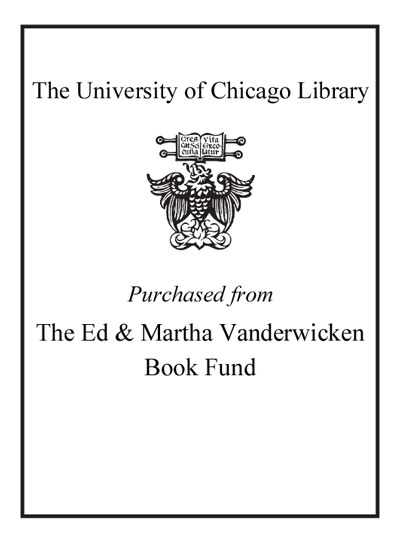Best technology practices in higher education /
Saved in:
| Imprint: | Medford, N.J. : Information Today, c2005. |
|---|---|
| Description: | xxi, 242 p. : ill. ; 24 cm. |
| Language: | English |
| Subject: | |
| Format: | Print Book |
| URL for this record: | http://pi.lib.uchicago.edu/1001/cat/bib/5573791 |
Table of Contents:
- Figures
- Tables
- Dedication
- Foreword
- Introduction
- Part 1. Best Practices in Teaching and course delivery
- Chapter 1. Electronic Portfolios
- Introduction
- Best Technology Practices Project
- Abilities and Skills
- Portfolio Integration
- Problems and Issues
- Tracking Student Progress
- Evaluating Success and Assessing Outcomes
- Assessing Outcomes
- References
- Chapter 2. Secure, Scalable Proctored Testing for Online Students
- Using Technology to Decrease Errors and Increase Efficiency and Efficacy
- How FSU's Online Students Locate and Get Approval for Proctors
- Implementation and Update
- Chapter 3. The Associated Colleges of the South's Course Delivery System
- ACS Course Delivery System
- Project Team
- Project Budget
- Project Impact
- What Would We Do Differently if We Were Starting Over?
- Project Evaluation
- Lessons Learned and Advice to Other Institutions
- Chapter 4. An End-to-End Solution for Internet Lecture Delivery
- Introduction
- Commercial Video Delivery Solutions
- Quality of Service: Problems and Approaches
- End-to-End Solution
- Performance Analysis
- Conclusion and Further Research
- References
- Chapter 5. Professors at Charleston Southern University Get a Lesson of Their Own-In the Latest Computer Software
- Chapter 6. An Outward Design Support System to Increase Self-Efficacy in Online Teaching and Learning
- Introduction
- Core Connectivity Needs of All Stakeholders for Online Support and Self-Efficacy
- Environmental Online Support Needs
- Unique Support Needs by Web Faculty for Online Support
- Unique Support Needs by Web Students for Distance Education
- Assessment of the Outward Design System for Online Support
- Future Directions
- References
- Chapter 7. Exploring E-Education Applications: A Framework for Analysis
- Introduction
- Background
- Methodology
- E-Education Framework
- Conclusion
- Endnotes
- References
- Part 2. Best Practices in Administrative Operations
- Chapter 8. HR Quick Requisition Process
- UC Irvine
- The Quick Requisition
- Quick Requisition Application Structure
- How Quick Requisition Works
- Conclusion
- Chapter 9. The Paperless Financial Aid Office
- Scope
- Project Team
- Who Benefited and How?
- Technical Architecture
- Chapter 10. Online Registration
- Student Usage
- Impact on the Registration Staff
- Advisement Community
- Chapter 11. E-Relationships: Enriching Communication with Prospective Students
- Chapter 12. Institutional Strategy and Information Support: The Role of Data Warehousing in Higher Education
- A Context for Change
- Institutional Issues
- Complexities of the Organization
- Stakeholders
- Competitive Marketplace
- Resource Limitations
- The Structure and Scope of Data Warehouses in Higher Education
- Data Warehousing
- Institutional Support for Data Management
- References
- Part 3. Technical or Integrative Best Practices
- Chapter 13. Integrating Learning and Transactional Systems
- Where Do We Start?
- The Plan
- Organizational Climate and Business Practices
- Results
- Chapter 14. Implementing Campuswide Voice-Over Internet Protocol (VoIP) Phone Systems at a Small College
- Introduction
- Project Scope
- Implementation of the VoIP Voice/Voice-Mail Systems and Upgrade to Westminster's Data Systems
- New Campus Number Convention
- End-User Training
- Legacy Phone System, Cabling, and Analog Lines
- Project Team
- Project Budget
- Who Benefited?
- Conclusion
- Chapter 15. Administration of Information Technology at a Small Liberal Arts University
- Overview
- Elizabeth Huth Coates Library
- Information Technology Services (ITS)
- Instructional Media Services (IMS)
- TigerCard Office
- Initiatives
- Conclusion
- Part 4. Future Best Practices
- Chapter 16. A Model for Monitoring and Migrating Web Resources
- Introduction
- Limitations of Existing Monitoring Techniques
- Migrating Web Resources
- An Overview of the Resource Locator Service
- Extending the Resource Locator Service to Monitor Web Resource Usage
- Defining the Information Stored by WebRUM
- Accessing WebRUM's Information
- Applications of WebRUM
- Charting the Web's Traffic Patterns
- Issues and Further Work
- Conclusion
- References
- Chapter 17. A Vision of the Internet in 2010
- Background
- 2010 Internet Requirements
- Extrapolating Technology Trends to a Vision
- Drivers to Achieve the Vision
- 2010 Internet Vision
- Conclusion
- Chapter 18. The One-Room Schoolhouse (Internet Portal) for K-12 Schools
- A Needs Assessment
- The Magnitude
- The Silver Bullet
- The One-Room Schoolhouse Revisited
- Feasibility and Challenges
- Conclusion
- About the University
- EDUCAUSE Awards for Excellence in Campus Networking
- EDUCAUSE Award for Systemic Progress in Teaching and Learning
- References
- Conclusion
- About the Contributors and Project Leaders
- Index

